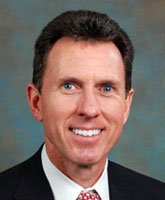The National Cotton Council’s (NCC) 2016 agenda focused on enhancing existing cotton policy as a way to improve U.S. cotton’s economic situation, while simultaneously advancing the industry’s priorities on appropriations, trade and regulatory issues.
The industry received a timely short-term boost after USDA implemented its Cotton Ginning Cost Share Program which delivered about $330 million to cotton producers based on their 2015 planted acres. This somewhat allayed an earlier disappointment when we were told there was no farm law authority to add cottonseed as an “other oilseed” in the 2014 farm law, making it eligible for the Agriculture Risk Coverage/Price Loss Coverage policies available to other crops. However, the industry continues to advance the cottonseed designation for consideration prior to the next farm bill’s development. Input on that development was part of the NCC’s intense educational effort with the new Congress and Administration.
On the trade front, the NCC expressed concerns about ongoing cotton and synthetic fiber policies of major agricultural producing countries, including India and China. By working closely with the Administration and Congress, the NCC sees an opportunity for these concerns to be addressed as part of the World Trade Organization ‘dedicated discussions’ on cotton policy held biannually.
Another major trade focus was a resolution to the Turkey anti-dumping case against U.S. cotton imports. Thanks to strong Congressional support and close coordination between the U.S. cotton industry and the Administration, a potentially devastating outcome ultimately was mitigated to some degree with Turkey applying a three percent duty across all U.S. cotton imports. While not the preferred outcome, this was much improved from Turkey’s preliminary decision reached earlier in the investigation.
The NCC vigorously addressed regulatory issues threatening to undermine U.S. cotton. A key focus was with EPA and the registration or re-registration of key crop protection products – so producers could continue having access to tools necessary for efficiently producing high-quality fiber. A prime example was coordination with EPA that led to the agency’s approving a label for both dicamba and 2,4-D for use over the top of new cotton varieties with these herbicide-tolerant traits.
Among Cotton Council International’s (CCI) many successful activities was a U.S. executive delegation to Southeast Asia – led by CCI President Keith Lucas – where U.S. cotton’s quality, timely delivery and other advantages were discussed with textile and garment leaders in Vietnam and Indonesia – the first and fifth largest U.S. cotton export markets. Late in the year, CCI helped host the biennial Sourcing USA Summit in California. A sold-out audience of the most influential executives in the global cotton fiber and textile business, representing 31 countries, shared timely information. These firms’ networking resulted in significant sales of U.S. cotton.
The Cotton Foundation Board of Trustees approved funding for 16 general research projects totaling $279,000. Approved projects include studies related to pest management, sustainability, pollinator protection, agronomic practices and education.
More details of the NCC’s 2016 activities are described below under the major headings of Farm Policy, Trade, Communications, Technical, Cotton Council International and The Cotton Foundation.
Shane Stephens, Chairman (2016)
Gary Adams, President/Chief Executive Officer
 |
 |
| Shane Stephens Chairman (2016) |
Gary Adams President/Chief Executive Officer |

